The iPhone is one of the most capable pocket cameras out there, especially if you harbor content creation ambitions, or simply want to stand out with “aesthetic” videos destined for social media.
In either case, storage space is a luxury — especially for someone who is all-in on the mobile-only workflow of capturing, editing, and posting photos. Naturally, one would gravitate in the direction of buying an iPhone with additional storage, but they come in at quite a fat premium. The Apple storage tax, if you will.
“Get yourself a portable SSD.” That’s a recurring piece of advice I’ve received from many amateur “mobigraphers” and photojournalists in my circle. They’re much cheaper and give you a lot more storage. It makes sense.
But an SSD dangling from the iPhone’s USB-C port is not exactly a pleasant sight. The other solution is investing in one of those bulky protective cases, or even using a DIY contraption to hold the two devices in place.
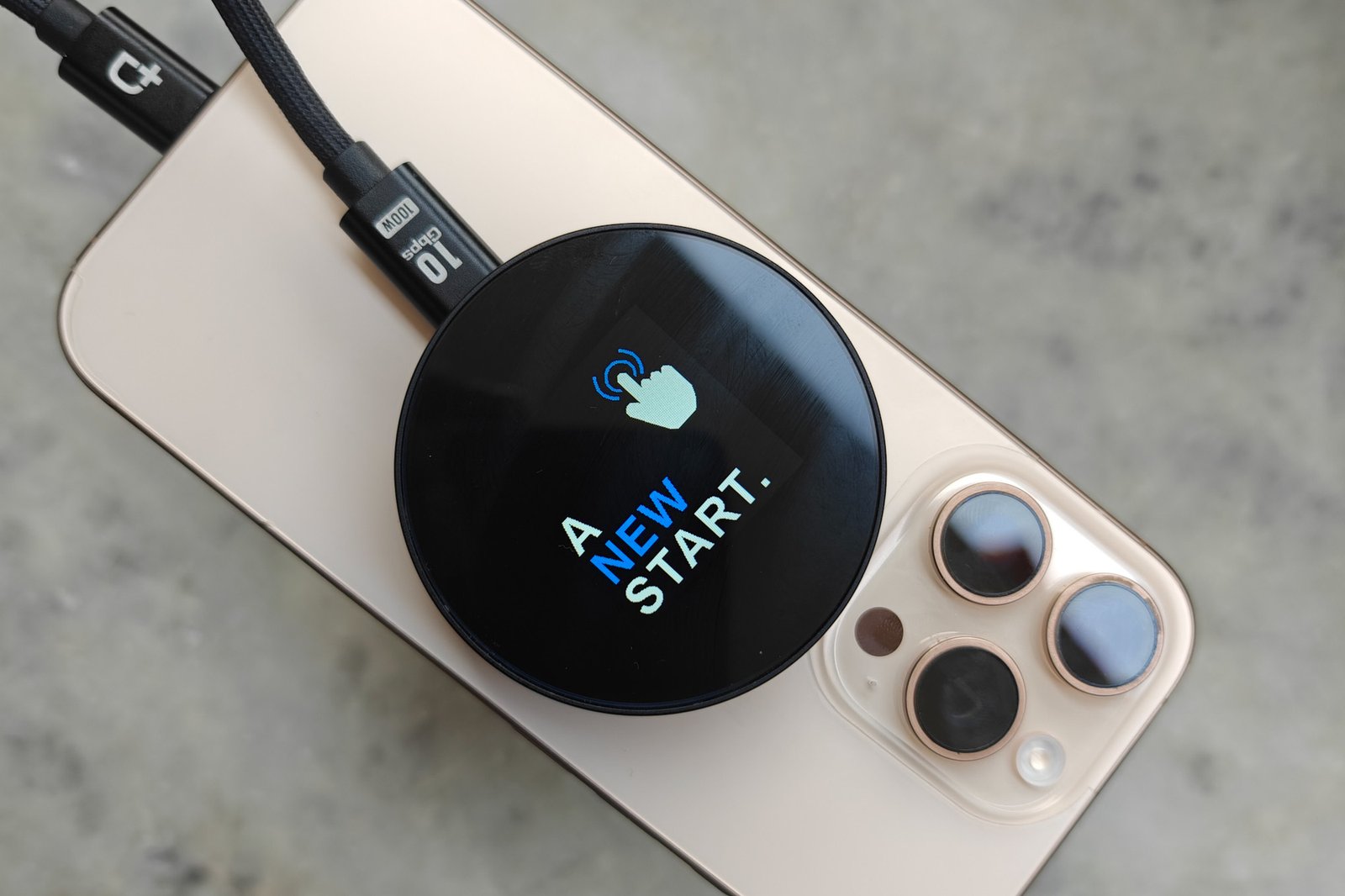
The overarching theme here is that even if you’re saving money on the storage upgrade – like any rational person — there is a convenience tax to be paid with a portable SSD. What if the SSD tapped into the potential of MagSafe, and stuck to an iPhone’s rear shell like one of those pricey Apple wallets or power banks? Dockcase turns that “what if” into a reality.
Dockcase’s Smart Magsafe M.2 NVMe SSD enclosure tries to solve all the problems mentioned above. It not only looks cool, but it’s also one of the most practical iPhone accessories you can buy.
What exactly is this thing?
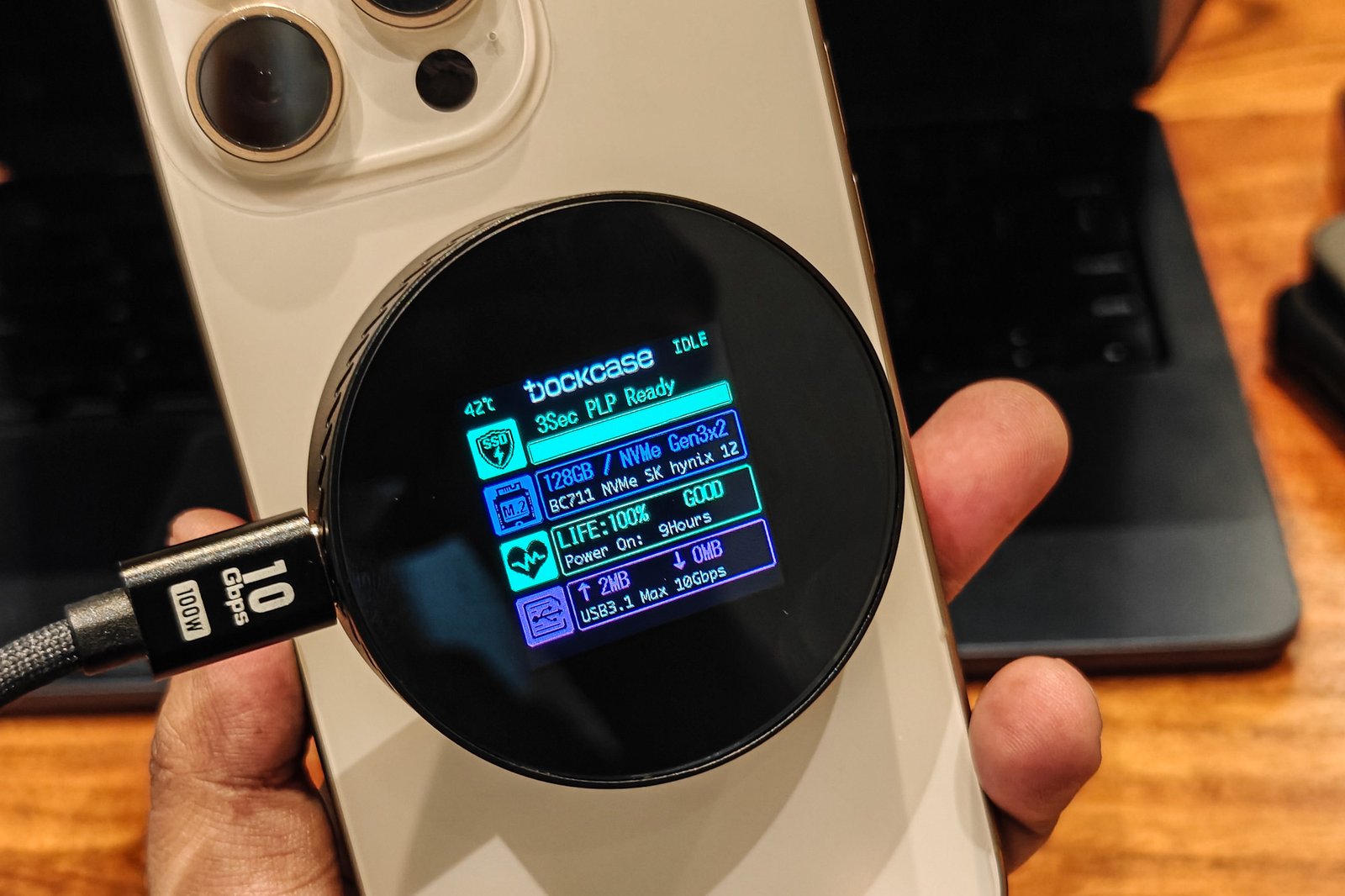
The Dockcase device is an enclosure for a small format SSD. Specifically, 2230 and 2242 drives, the kind you will find crammed inside handheld gaming consoles such as the Steam Deck or the Asus ROG Ally. A few tablets, such as Microsoft’s Surface Pro, also rely on these compact SSDs as a space-saving solution.
Think of this enclosure as a forever upgradable medium to park an SSD inside an iPhone. Theoretically, that is. The round enclosure takes small format SSDs that are dramatically more affordable than investing in a portable SSD.
The likes of Corsair and WD sell such small format SSDs for under $100, offering up to 1TB capacity. Taking into account how much Apple charges, Transcend’s 128GB 2242 SSD costs just $25 — a quarter of what Apple demands for a similar capacity upgrade.
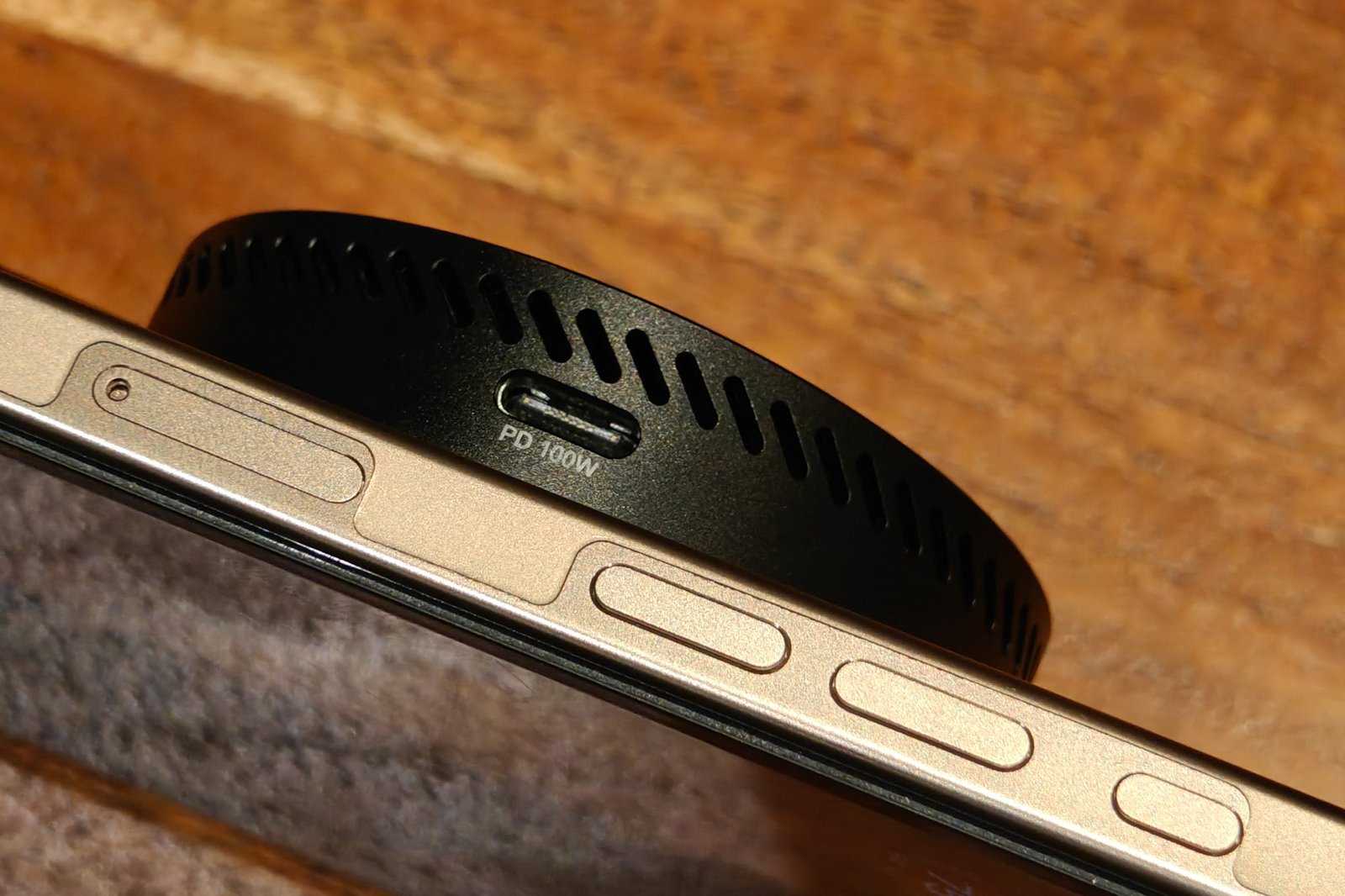
The inherent idea here is that you can buy an enclosure like this one from Dockcase, plop in an SSD, and still save a lot more money compared to what Apple would pull from your wallet for an equivalent bump in onboard storage capacity.
For anyone dreaming of cinematic 4K 24 frames per second (fps) or slo-mo 4K 120fps videos, Apple mandates external storage, so you will have to either invest in a portable SSD, or an enclosure like the one Dockcase offers and then buy a sufficiently fast stick of your own.
How the Dockcase accessory works
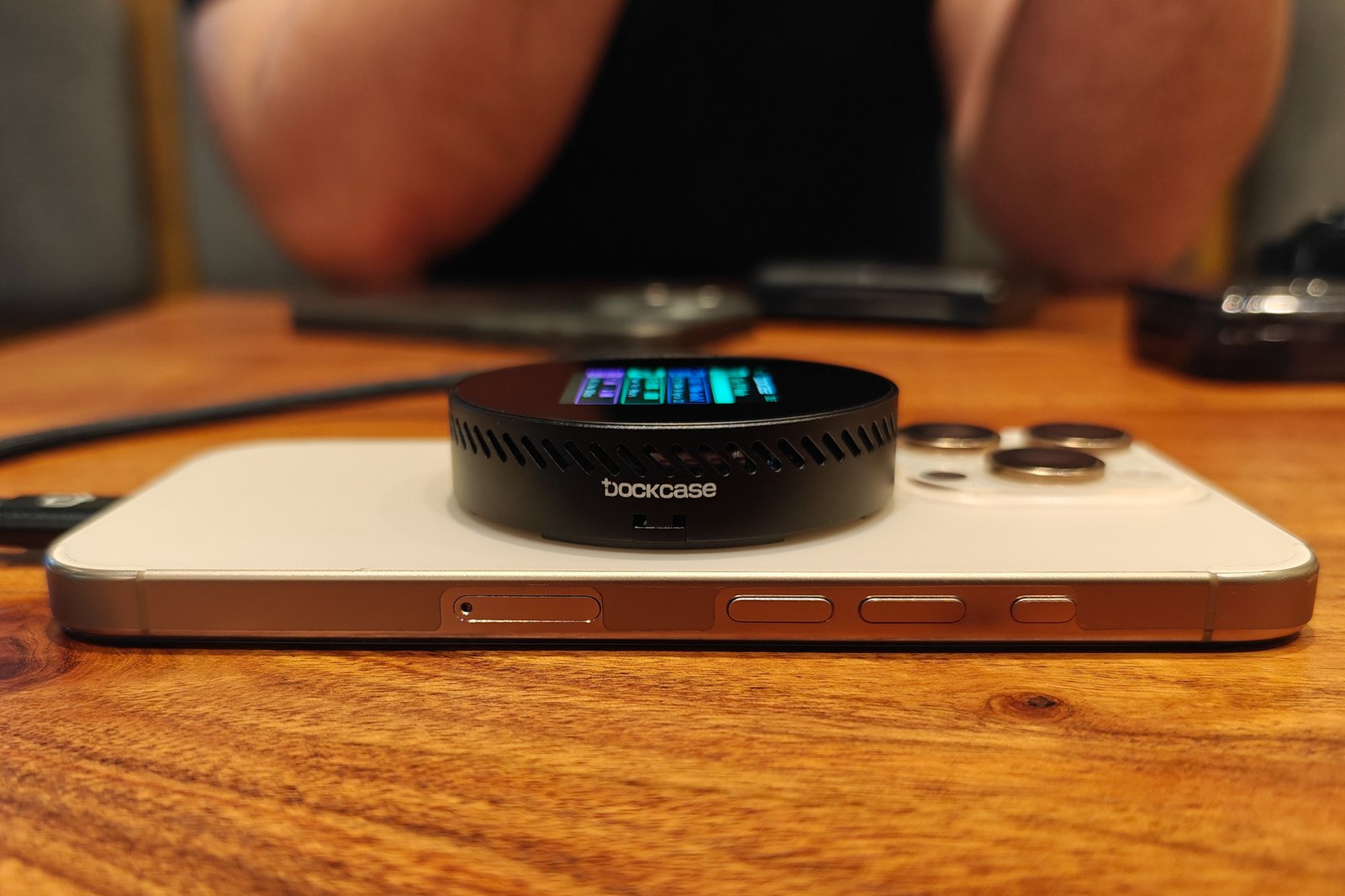
Dockcase supplied me with a test sample that came with a 128GB SK Hynix SSD installed within the enclosure. Thankfully, the retail package comes with a screwdriver, so you can easily remove the two screws holding the rear plate in place.
There are silicon pads underneath to make sure that the enclosure doesn’t end up scratching the iPhone’s glass shell. The magnetic grip is pretty solid, and during my time recording videos, it firmly held onto its spot firmly, irrespective of the phone’s orientation.
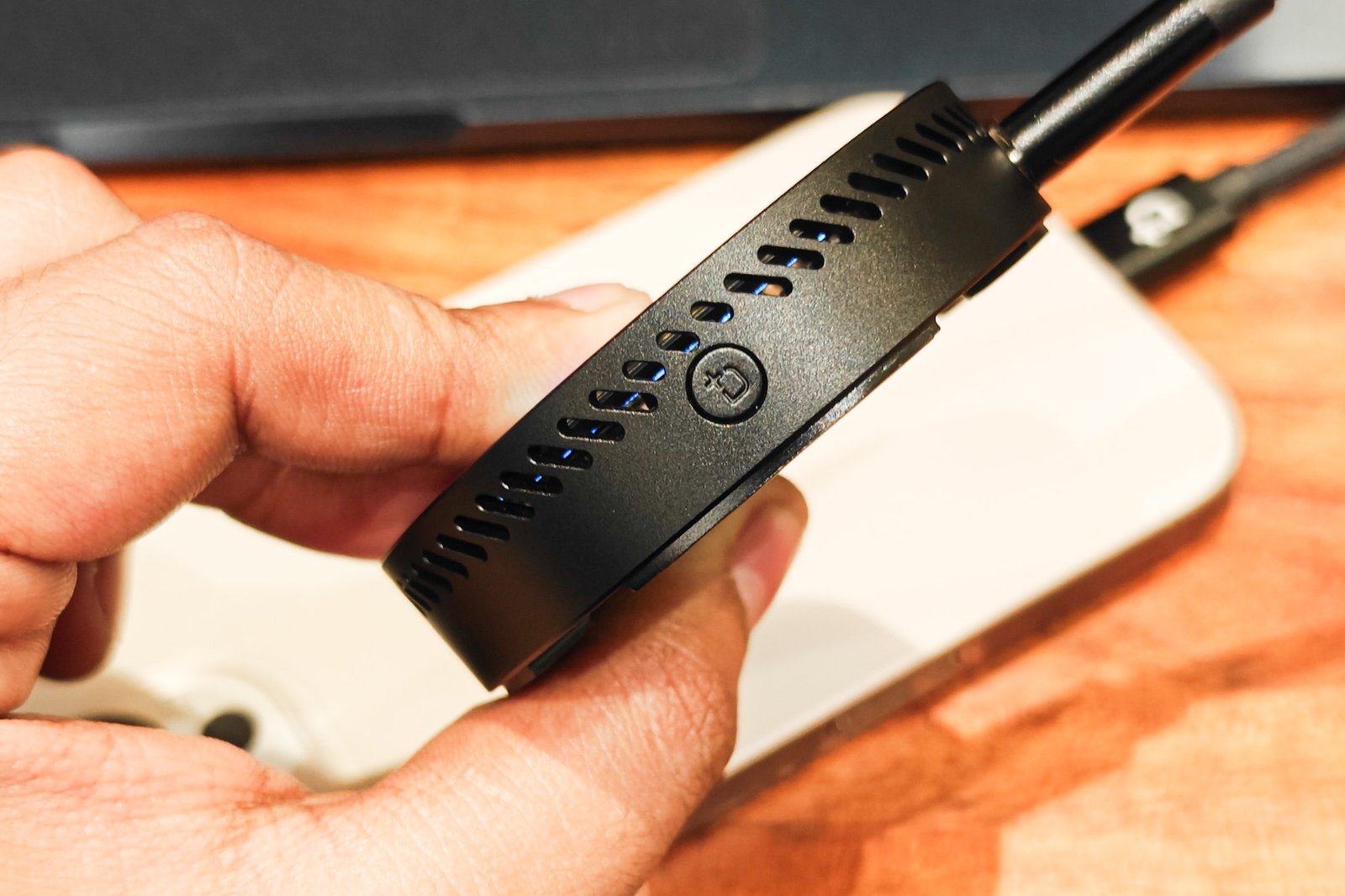
Setting it up is pretty easy. In fact, you don’t have to do anything on the SSD’s screen itself. There’s a multifunction button on the side, which accepts both short clicks and long-press gestures for navigating through the UI, which is just a few pages deep.
All you need to do is plug in a USB-C cable in your iPhone’s USB-C port, and the other end to the SSD enclosure. The cable Dockcase offers in the retail package allows 10Gbps passthrough, which is the bare minimum for allowing video capture on an external device.
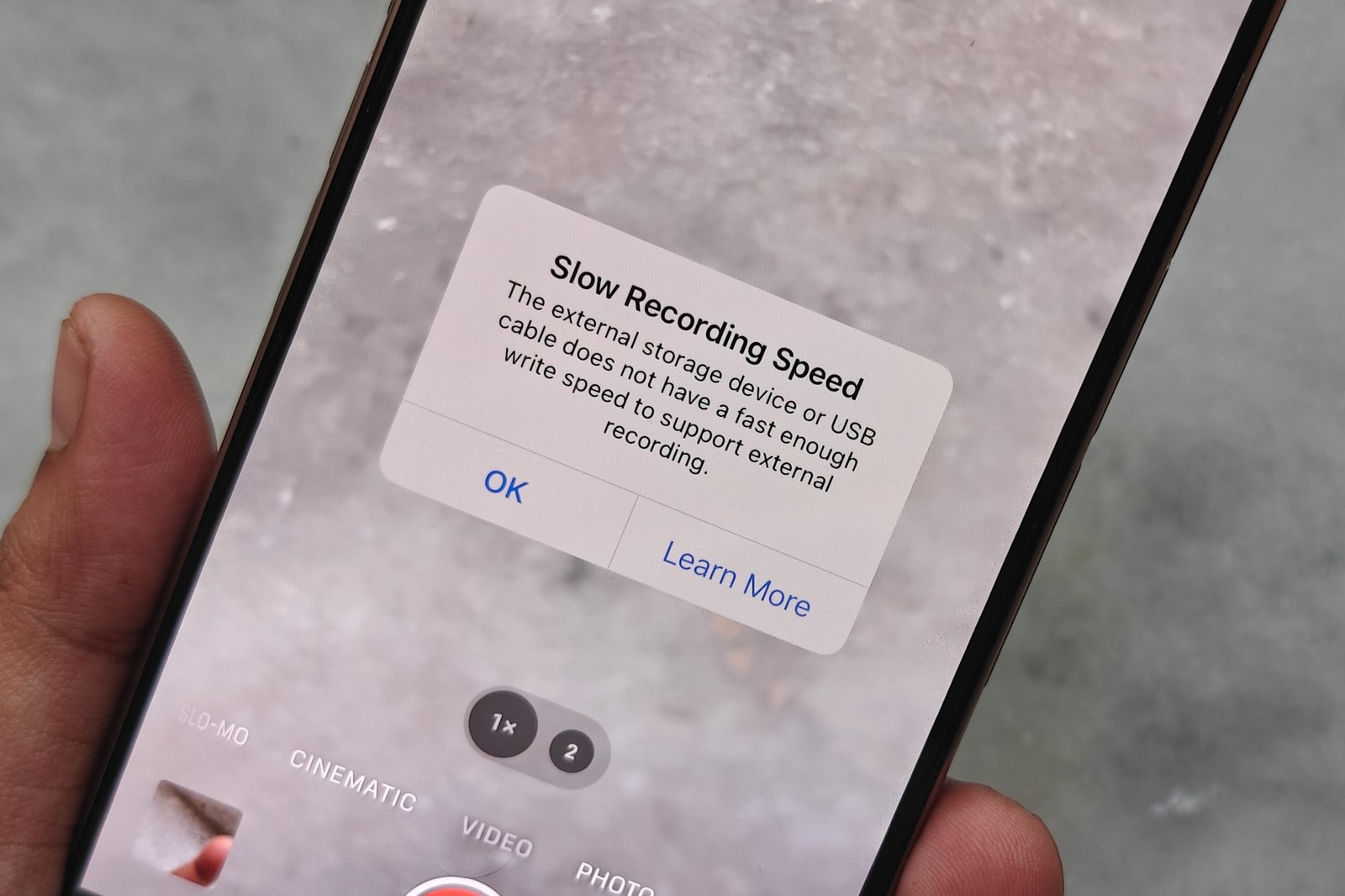
The only criteria you need to keep in mind is that the SSD should be formatted with exFAT, which is fairly easy. As far as the build goes, Dockcase has used an aluminum alloy enclosure, which feels quite sturdy.
There are vents across the side circumference for heat dissipation. This is a crucial addition, as the kit tends to run hot. My most recent video capture session spiked the temperature levels to 123 degrees Fahrenheit.
Let’s talk about the display
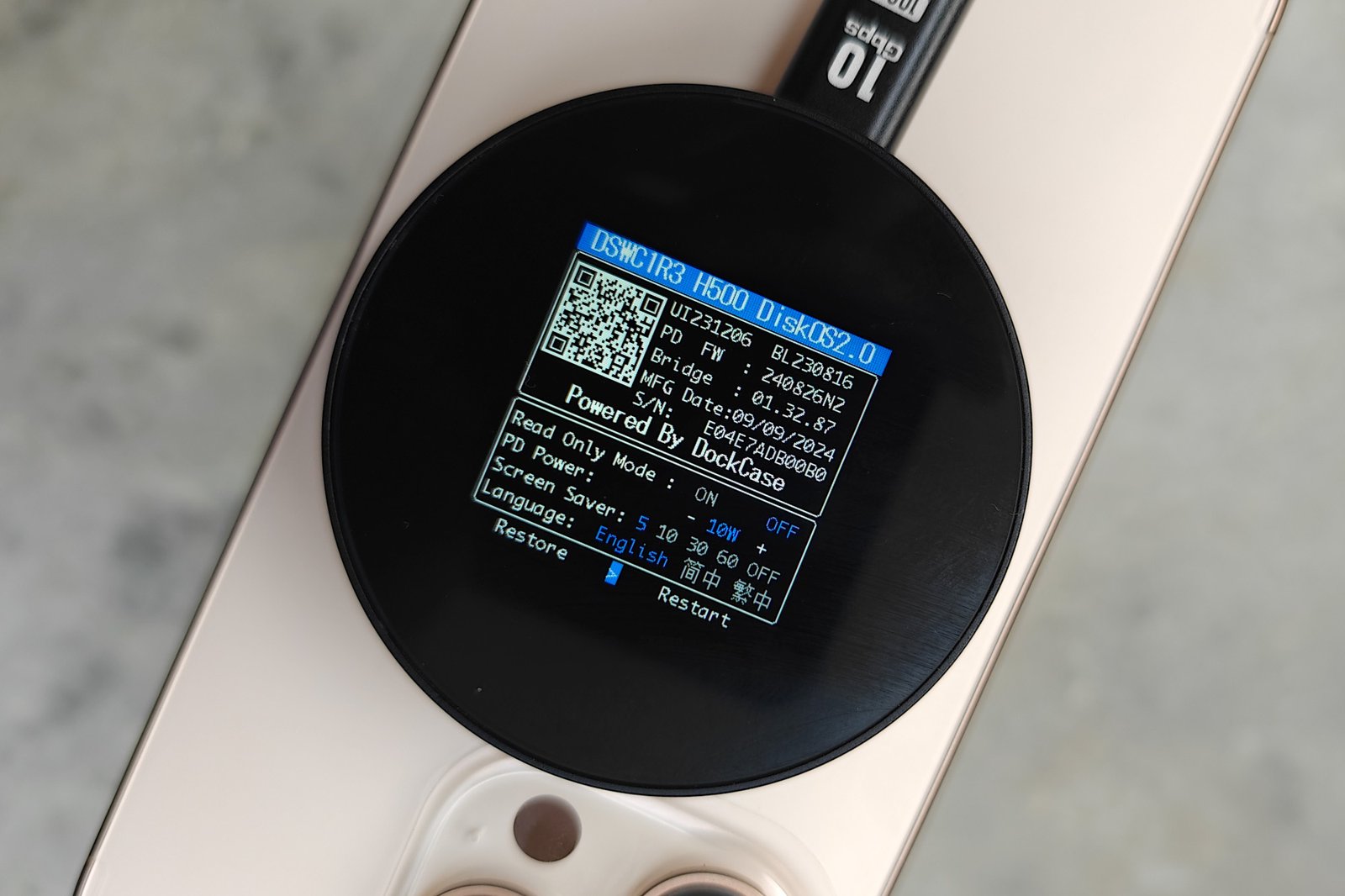
OK — let’s talk about the display. It’s not touch-sensitive, in case you’re wondering. Ideally, when using an external storage device for shooting with a phone, you don’t really need a screen atop the drive, since all the controls are available right on the phone’s screen.
On the Dockcase MagSafe enclosure, you get a screen that offers an at-a-glance view for crucial information such as power loss protection (PLP) status, read and write speeds (during video capture), and battery health in terms of cycles.
With a long-press of the button, you will land on the menu page where you can enable or disable the read-only mode. This is a thoughtful addition, as it ensures that data is not deleted inadvertently, or any technical issue doesn’t end up wiping a chunk of (or the entire) drive.
This is where you can also adjust the power delivery output) Why? Well, there’s a second USB-C port on the device that supports up to 100 watts of output for charging the host device. You can also change the language, adjust the screen-on time, or entirely turn it off.
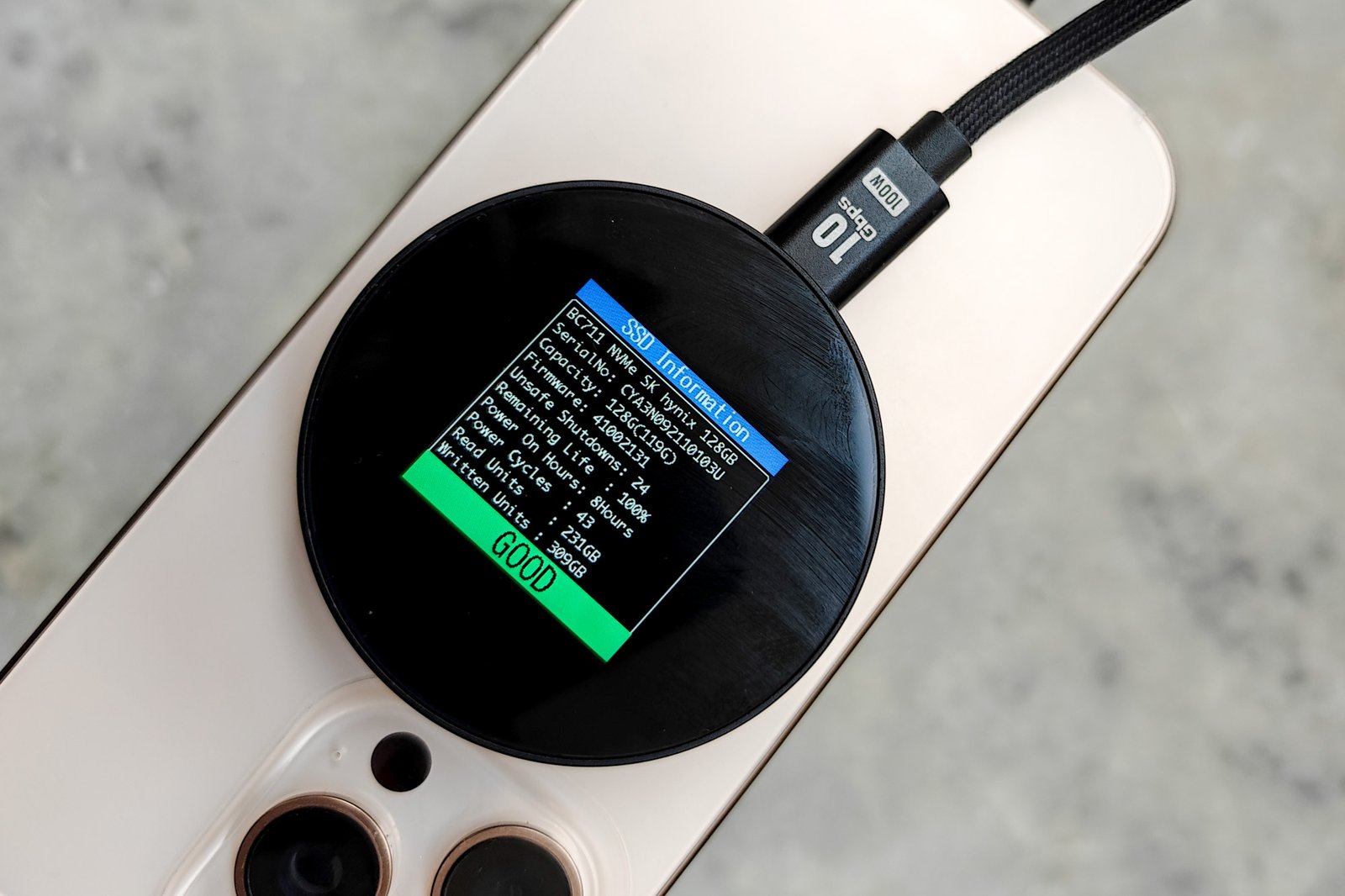
More importantly, this is the page where you can restart the SSD inside, or reset it. There’s a chance that depending on the SSD formatting status or the native software presets, you might need to restore it.
In my case, the SK Hynix drive kept returning an error message every time I wanted to record ProRes footage. That kept happening despite the drive being in exFAT format and the iPhone also reading it properly in the Camera as well as the Files app.
Since I didn’t already have any data on it, I restored the SSD using the physical button on the enclosure. If you already have files saved on the drive, it’s imperative to move them elsewhere before you restore the SSD.
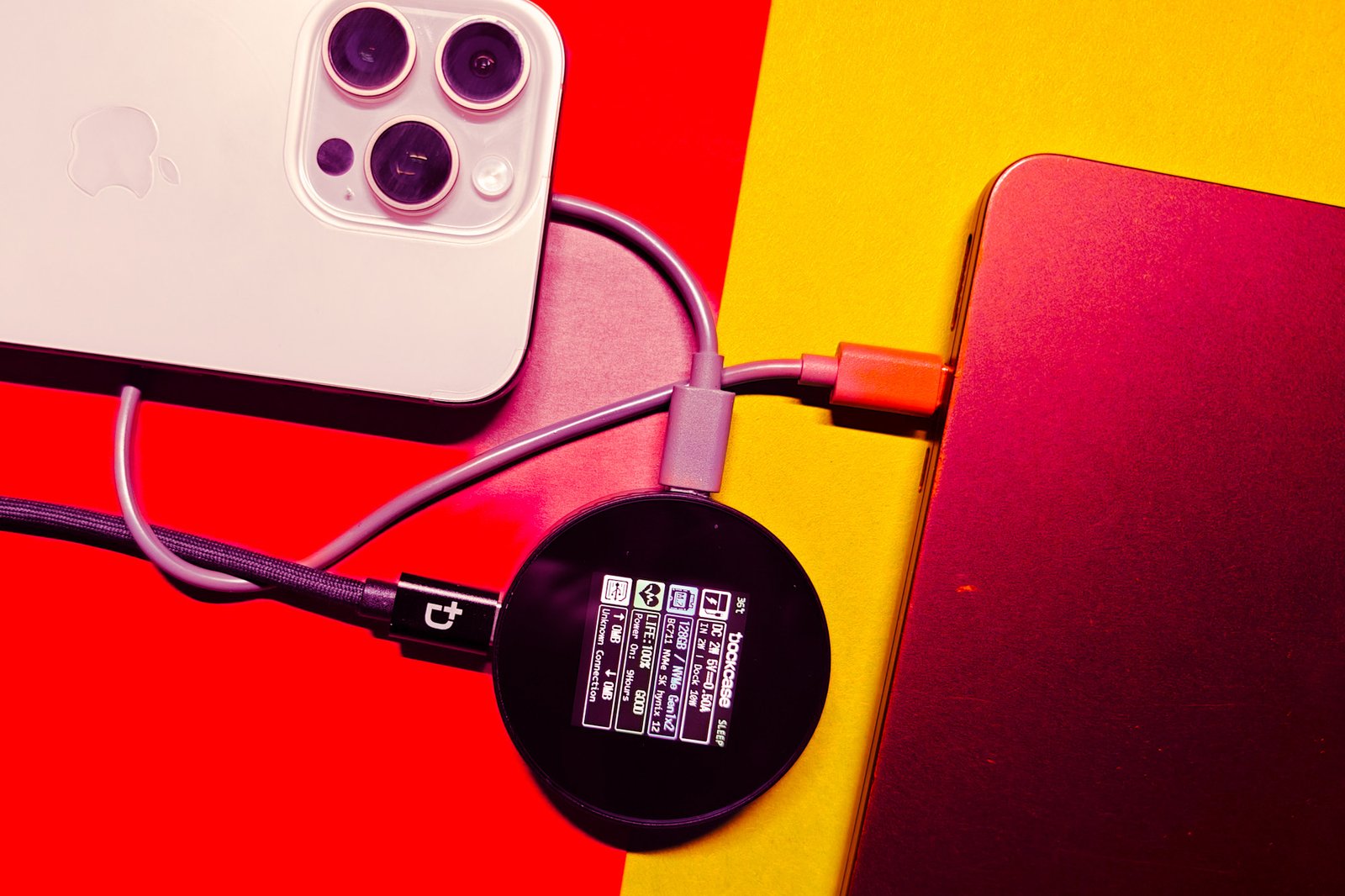
Oh, also, a double tap on the button changes the screen orientation by 90 degrees. It’s not exactly a life-changing perk, but it’s still convenient in its own little way. Dockcase offers the MagSafe-ready enclosure in two variants — one with a 15W power supply and a pricier trim with a 100W power supply capacity.
The USB-C port is the USB v3.2 Gen 2 type, which means the peak speeds you get are 10Gbps. It’s not the fastest, but gets the job done for most scenarios.
What are the alternatives?
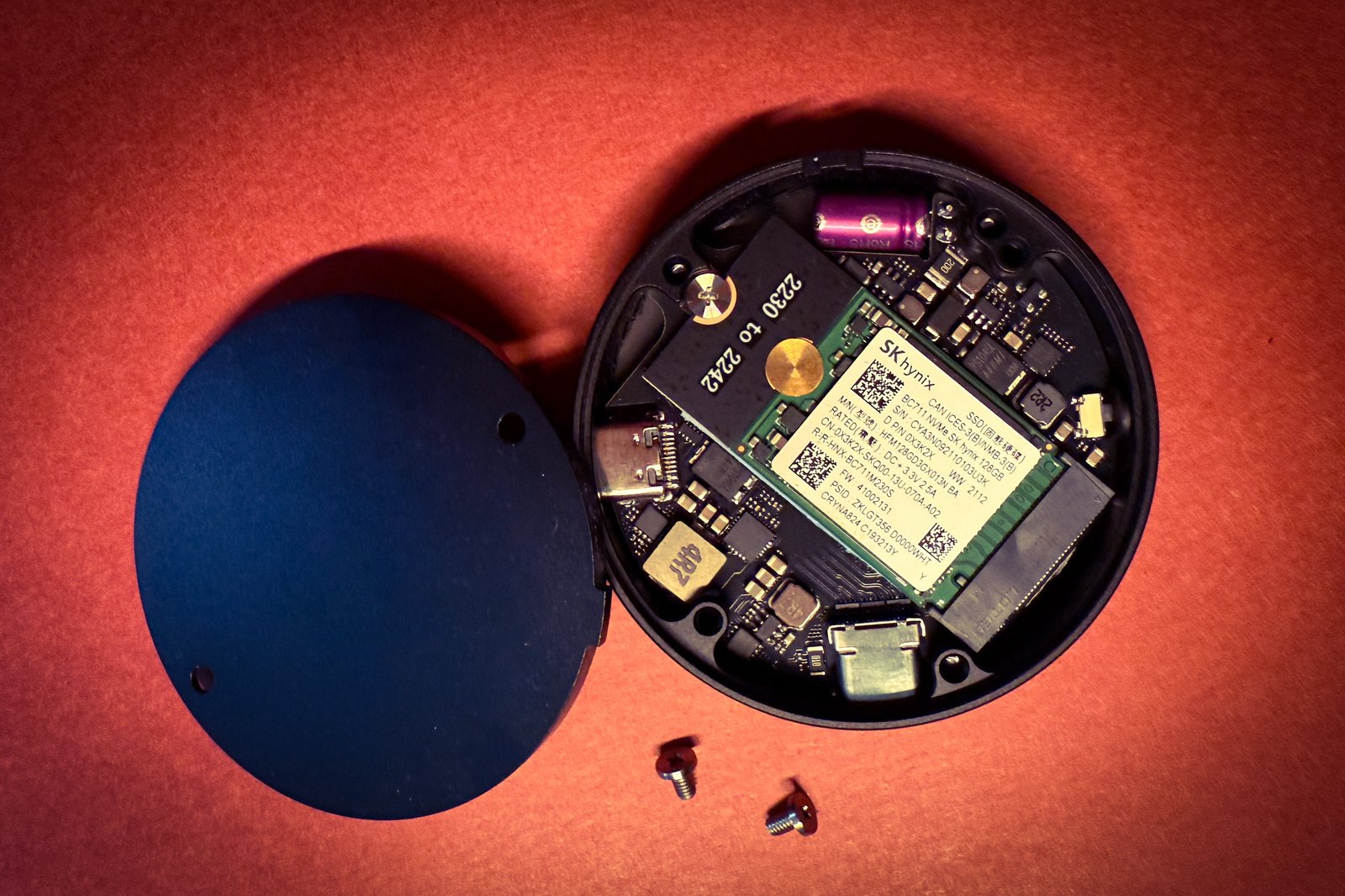
Apple already limits the camera capabilities of your “Pro” flagship if you invest in the lowest-priced 128GB storage variant, especially when it comes to capturing high frame rate ProRes capture.
Now, it’s already a crime if you sell a $1,000 phone with only 128GB storage, but that’s just Apple. That status quo makes it abundantly clear that you need a solution, one that is going to stick with your iPhone, literally and figuratively, during the course of camera-first usage.
As you climb from 128GB to 256GB, you pay an extra $100. For that amount, you can get the excellent Samsung T7 portable SSD with 1TB capacity. If you go with the likes of Crucial or SanDisk, you can save even more of your hard-earned dollars.
If you’re brave enough to spend on the equivalent 1TB version of the iPhone 16 Pro, your bill goes all the way up to $1,499. For the premium you pay to go from 128GB to 1TB, you can skip the Apple upgrade and buy the equivalent of 5TB storage in portable SSDs.

The disadvantage? You will have to go through the ordeal of plugging a cable into the iPhone’s USB-C port in order to record all your footage on the external drive. Oh, the hassle! On the positive side, you won’t have to go through the ordeal of trying to transfer all those videos to a computer.
So, which one is better? Well, if you value convenience, a portable SSD is the best choice. But if you seek the flexibility of swapping in small format SSDs with ease, using nothing but a screwdriver, then an enclosure is where you should look.
The Dockcase device just throws in a few extra conveniences, including MagSafe and a screen, to name a few. Looking over at the competition, rival brands that also offer similar enclosures miss out on facilities like auxiliary power ports, power loss protection, the assurance of a read-only mode, and health monitoring.
A cool and practical investment
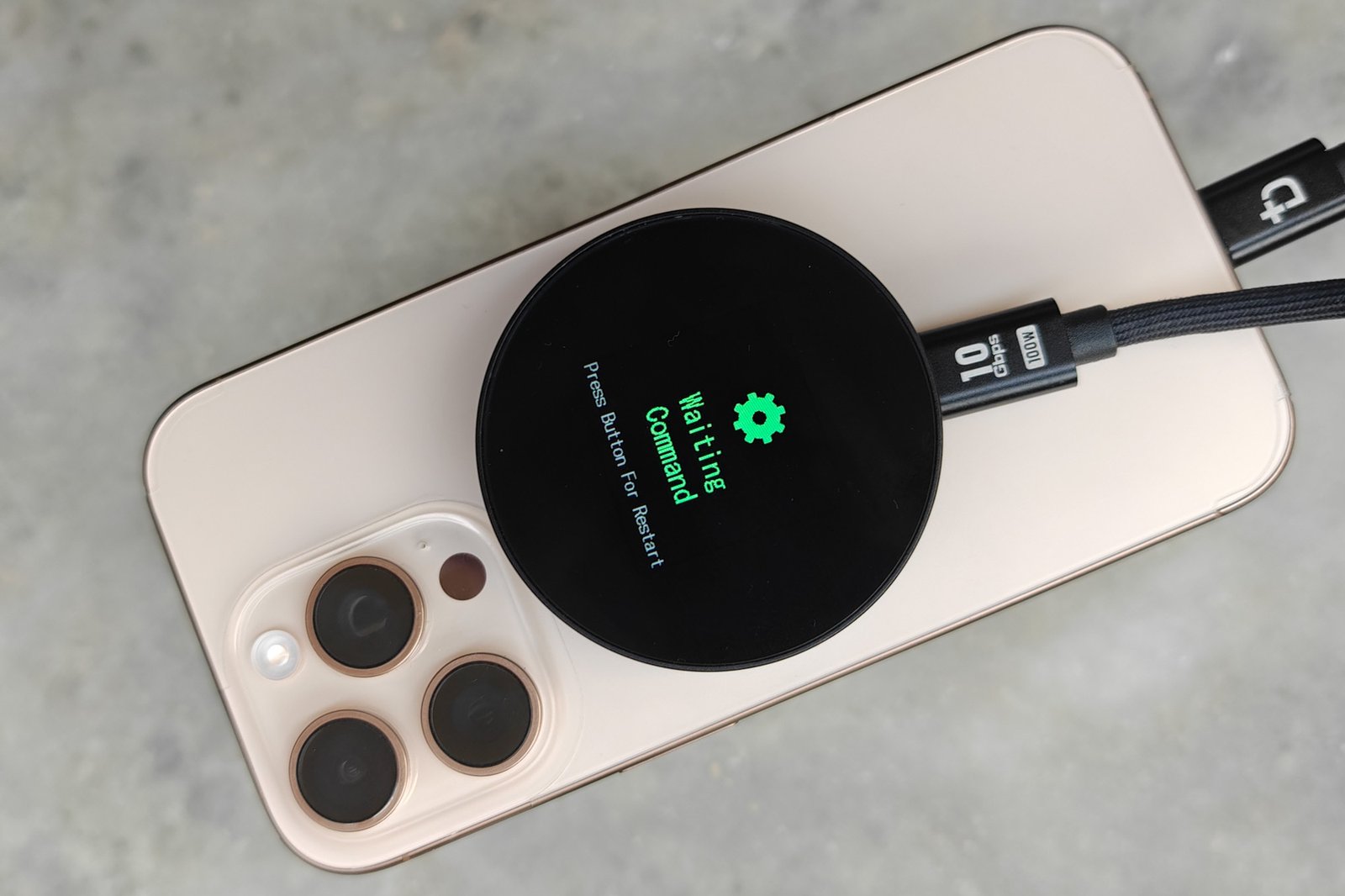
Right now, the 15W version of the Dockcase MagSafe SSD enclosure starts at just $49 for early backers, while the 100W trim is going for $79 via the Kickstarter campaign. If you are after a gadget that offers the convenience of MagSafe and the versatility of a removable SSD, this can save you a lot of money.
Apple’s current write speed requirements stand at 440MB per second for 4K 120 fps ProRes videos. Moreover, you need at least a USB-C cable with a 10Gbps transfer rate. With the Dockcase bundle, you are covered on both ends, as long as you pick a sufficiently fast small format SSD.
The pitfalls? Keep it as far away from water or dust as possible due to those heat vents on the sides. Also, if you are planning to use a gimbal, you are in for some awkward adjustments. Just let it dangle, I’d say, for such scenarios.
In conclusion, a solution like this is more of a necessity than a vanity purchase. For normal usage, I can wholeheartedly recommend this. But even if your iPhone has an ample amount of storage space, I suggest investing in something like this to shoot memories on the move and safely store them.













